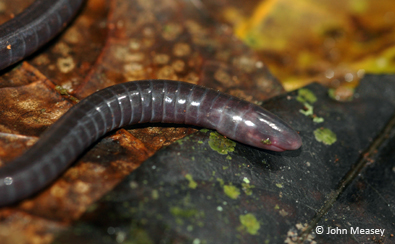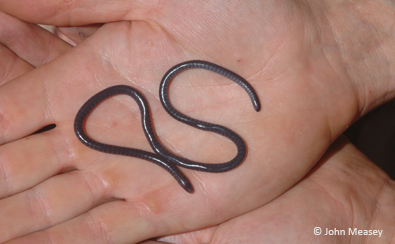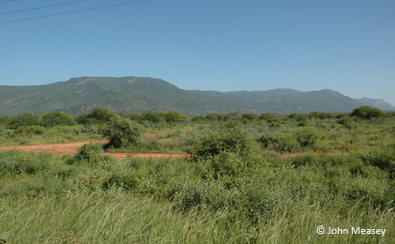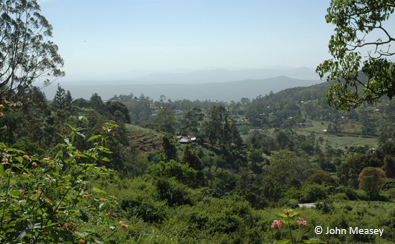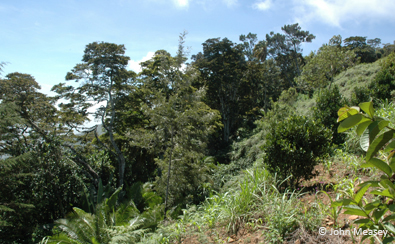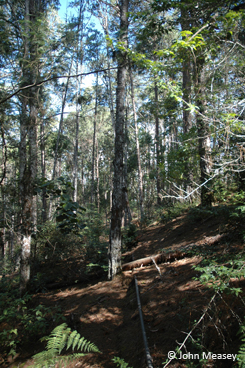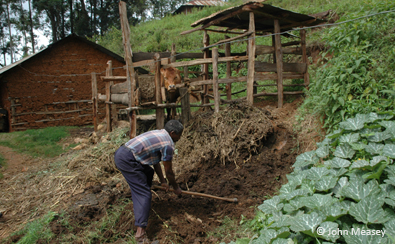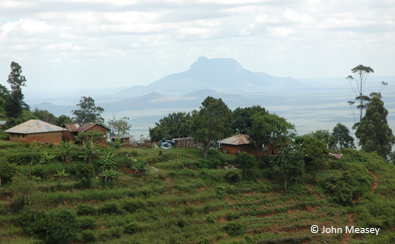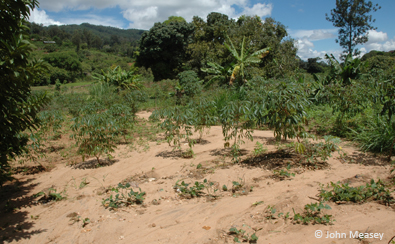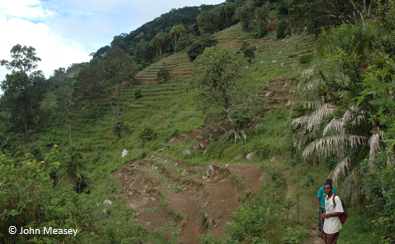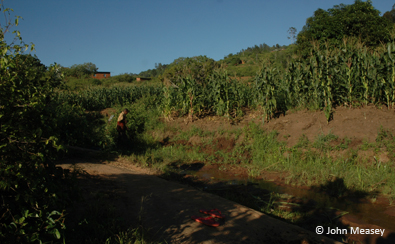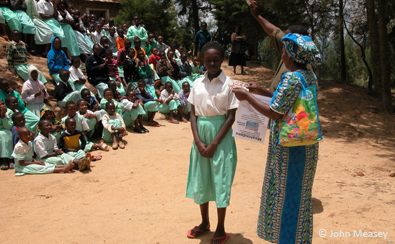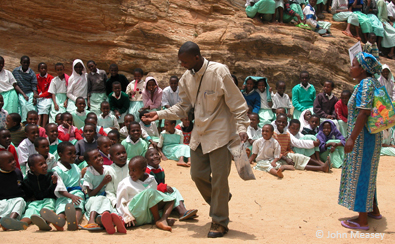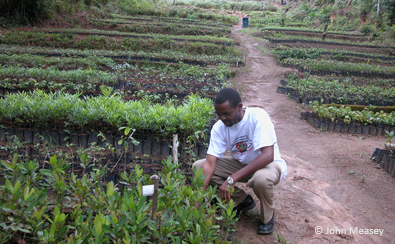The EDGE Amphibians project has recently secured funding to start a conservation project for one of our highest priority species – the Sagalla caecilian (Boulengerula niedeni).
Caecilians are a small group of just over 170 species of limbless amphibian, often mistaken for worms or snakes. EDGE is working with the Amphibian Specialist Group and Critical Ecosystems Partnership Fund and experts in Kenya and internationally to protect habitat for the Sagalla caecilian, which is currently the world’s only registered Critically Endangered caecilian. Despite being an unremarkable looking creature – it’s local name was “M’gnori” or earthworm until very recently – they are fascinating creatures and could hold the key to restoring habitat across Sagalla Hill, both for the area’s unique biodiversity and for the Sagalla people, who also depend on good soils and native vegetation.
The following account was contributed by Dr. John Measey from the South African National Biodiversity Institute (SANBI), and will set the scene for coming updates about our progress in Sagalla. John has worked in Sagalla for a number of years and is a project partner for our collaborative Sagalla caecilian conservation project, which is entitled: Restoration of Sagalla Hill with a view to creating a sustainable future for the Critically Endangered caecilian Boulengerula niedeni. Upcoming blogs will introduce our Kenyan collaborators, including project manager James Mwang’ombe from the East African Wild Life Society and Dorine Ngeti, our EDGE Fellow for the Sagalla caecilian. Watch this space!
“Conserving the Sagalla caecilian means helping the people of Sagalla to farm their precious land in a more sustainable way. Removing alien Eucalyptus trees is also top priority as these dry out the soil.”
Pictures and text by Dr. John Measey (SANBI)
From the outside, Sagalla Hill isn’t much to look at. Rising 700 m above the Tsavo Plain the mountain is high enough to catch rain clouds coming from the Indian Ocean and was originally crowned with a lush forest. In January (after the rains) the savannah looks green, but for most of the year it is dry and brown:
View of the lush interior of Sagalla Hill – note in the foreground (left) exotic Lantana and Eucalyptus. The flat central valley (to right) is heartland of caecilian abundance:
Very little natural forest is preserved (this is the edge of the community preserve) and even the steepest slopes are cultivated. Note guava, maize and citrus in right foreground:
Much of the valuable land on the mountain has been used as a government plantation. Originally planted as pine, Eucalyptus was introduced and is now invading much of the area and drying out the soil:
The Sagalla caecilian (like most other caecilians) prefers rich dark soil as this is normally abundant with potential prey items: termites and earthworms. Here a cow briar (part of a local zero grazing initiative) provides plenty of manure which make a rich fertiliser and home for the Sagalla caecilian:
Only 15 years ago this was indigenous forest. The pressure for land in Sagalla means that even forest sanctuaries can be removed to provide agricultural land. Note Mount Kasigau in the distance, also topped by forest but only farmed around the bottom:
Soil erosion is a very serious problem for farmers and caecilians alike. The deep rich soil that the caecilians prefer is washed away leaving a poor sandy substrate. This soil is not good for farmers or caecilians:
Even when the land is terraced, if the slope is too steep this leads to erosion:
Cultivating right to the edge. The pressure for land is so great that no room is left between crops (here maize) and the central stream that runs through the valley. Here we found adult female caecilians in nests ready to lay eggs, but the next rains may wash away this whole bank:
A Sagalla caecilian is not very big and looks so much like an earthworm that in the local language (kisagalla) it was called M’gnori (earthworm):
A competition to give a new local name for the caecilian was won by Shali Kiugha (Standard 6 at Lhray Primary School, Sagalla) who suggested the name “Kilima-mrota”. In kisagalla, there are several animals which are known as Kilima-something. Each is an elongated animal that moves in the soil surface or amongst leaves and in shallow soil. Mrota means to get thin. As Shali noted, if the caecilian is exposed to sunshine, it gets thin and dies – like all amphibians its skin is moist and the animal will die if it dries completely. The prize was presented to her by the area sub-chief, a forestry official and representative of the Environmental Committee:
The whole school turned out to see Shali win her prize, and they were fascinated to find out that the caecilian is not an earthworm. They are shown the caecilian by Bigvai Mwaizango (amphibian conservation worker) while a local forestry official explains the importance of this species to Sagalla:
What we need for the future – Jonathon Manyindo examines one of 20 000 indigenous seedlings on nearby Mount Mbololo. His CEPF funded initiative is currently planting out these seedlings into a government plantation. Sagalla is lower and needs different indigenous seedlings toreplant the government plantation:
